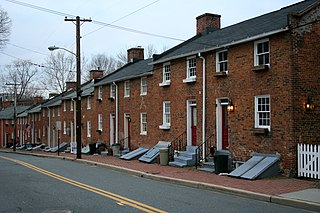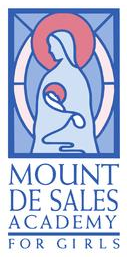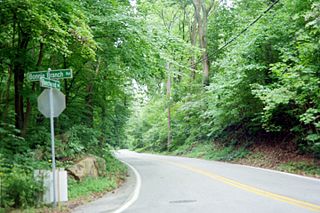
Baltimore County is the third-most populous county in the U.S. state of Maryland. The county is part of the Central Maryland region of the state. Baltimore County partly surrounds but does not include the independent city of Baltimore. It is part of the Northeast megalopolis, which stretches from Northern Virginia in the south to Boston in the north and includes major American population centers, including New York City and Philadelphia. Major economic sectors in the county include education, government, and health care. As of the 2020 census, the population was 854,535. The county is home to several universities, including Goucher College, Stevenson University, Towson University, and University of Maryland, Baltimore County.

Carroll County is a county located in the U.S. state of Maryland. As of the 2020 census, the population was 172,891. Its county seat is Westminster. The county is part of the Central Maryland region of the state. Carroll County is included in the Washington-Baltimore-Arlington, DC-MD-VA-WV-PA Combined Statistical Area. While predominantly rural, the county has become increasingly suburban in recent years.

Catonsville is a census-designated place (CDP) in Baltimore County, Maryland. The population was 44,701 at the 2020 US Census. The community is a streetcar suburb of Baltimore along the city's western border. The town is known for its proximity to the Patapsco River and Patapsco Valley State Park, making it a regional mountain biking hub. The town is also notable as a local hotbed of music, earning it the official nickname of "Music City, Maryland." Catonsville contains the majority of the University of Maryland, Baltimore County (UMBC), a major public research university with close to 14,000 students.

Westminster is a city in and the county seat of Carroll County, Maryland, United States. The city's population was 19,960 at the 2020 census. Westminster is an outlying community in the Baltimore metropolitan area, which is part of the greater Washington–Baltimore combined statistical area.

Ellicott City is an unincorporated community and census-designated place in, and the county seat of, Howard County, Maryland, United States. Part of the Baltimore metropolitan area, its population was 75,947 at the 2020 census, making it the most populous unincorporated county seat in the country.

The University of Maryland, Baltimore County (UMBC) is a public research university in Catonsville, Maryland named after Baltimore County. It had a fall 2022 enrollment of 13,991 students, 61 undergraduate majors, over 92 graduate programs and the first university research park in Maryland. It is classified among "R1: Doctoral Universities – Very High Research Activity".

Green Mount Cemetery is a historic rural cemetery in Baltimore, Maryland, United States. Established on March 15, 1838, and dedicated on July 13, 1839, it is noted for the large number of historical figures interred in its grounds as well as many prominent Baltimore-area families. It retained the name Green Mount when the land was purchased from the heirs of Baltimore merchant Robert Oliver. Green Mount is a treasury of precious works of art, including striking works by major sculptors including William H. Rinehart and Hans Schuler.

Catonsville High School (CHS) is a four-year public high school in Catonsville, Maryland. It is located on the southwest side of Baltimore County, Maryland, close to the Baltimore border near Anne Arundel and Howard County, just outside the Baltimore Beltway.

Oella is a mill town on the Patapsco River in western Baltimore County, Maryland, United States, located between Catonsville and Ellicott City. It is a 19th-century village of millworkers' homes.

Doughoregan Manor is a plantation house and estate located on Manor Lane west of Ellicott City, Maryland, United States. Established in the early 18th century as the seat of Maryland's prominent Carroll family, it was home to Founding Father Charles Carroll, a signer of the United States Declaration of Independence, during the late 18th century. A portion of the estate, including the main house, was designated a National Historic Landmark on November 11, 1971. It remains in the Carroll family as a private working farm.

Pigtown is a neighborhood in the southwest area of Baltimore, bordered by Martin Luther King Jr. Boulevard to the east, Monroe Street to the west, Russell Street to the south, and West Pratt Street to the north. The neighborhood acquired its name during the second half of the 19th century, when the area was the site of butcher shops and meat packing plants to process pigs transported from the Midwest on the B&O Railroad; they were herded across Ostend and Cross Streets to be slaughtered and processed.

St. Charles College was a minor seminary in Catonsville, Maryland, originally located in Ellicott City, Maryland.

Mount de Sales Academy is an all-girls secondary school located in Catonsville in unincorporated Baltimore County, Maryland. The school is located near the city of Baltimore and within the Roman Catholic Archdiocese of Baltimore.

Maryland Route 144 is a collection of state highways in the U.S. state of Maryland. These highways are sections of old alignment of U.S. Route 40 between Cumberland and Baltimore. Along with US 40 Scenic, US 40 Alternate, and a few sections of county-maintained highway, MD 144 is assigned to what was once the main highway between the two cities, connecting those endpoints with Hancock, Hagerstown, Frederick, New Market, Mount Airy, Ellicott City, and Catonsville. MD 144 has seven disjoint sections of mainline highway that pass through the Appalachian Mountains in Allegany and Washington counties and the rolling Piedmont of Frederick, Carroll, Howard, and Baltimore counties.

Ilchester is an unincorporated community and census-designated place in Howard County, Maryland, United States. The population was 23,476 at the 2010 census. It was named after the village of Ilchester in the English county of Somerset.

Patapsco Valley State Park is a Maryland state park extending along 32 miles (51 km) of the Patapsco River south and west of the city of Baltimore, Maryland. The park encompasses multiple developed areas on over 14,000 acres (5,700 ha) acres of land, making it Maryland's largest state park. In 2006, it was officially celebrated as Maryland's first state park, its first formation being in 1906. Patapsco Valley State Park is managed by the Maryland Department of Natural Resources.
Thistle Manufacturing Company factory was a historic factory located along the Patapsco River, which runs through Catonsville, Maryland across from Ilchester, Maryland. The 1800s factory was in continuous operation until 2003.
Ingleside is a historic home that once stood in Catonsville, Maryland.
Johnnycake Town, also called Journeycake Town, was an 18th-century neighborhood in Baltimore County, Maryland, United States, which served as an early stopping point along the the old route to Frederick from Baltimore. It was located two miles north of the location where Catonsville later developed, whose residential sprawl now surrounds the neighborhood.

Richard Caton was an Englishman who became a Baltimore merchant and real estate developer. Caton married into the Carroll family of Carrollton and was the father of four daughters, all of whom married prominent Europeans, including members of the British aristocracy.


















